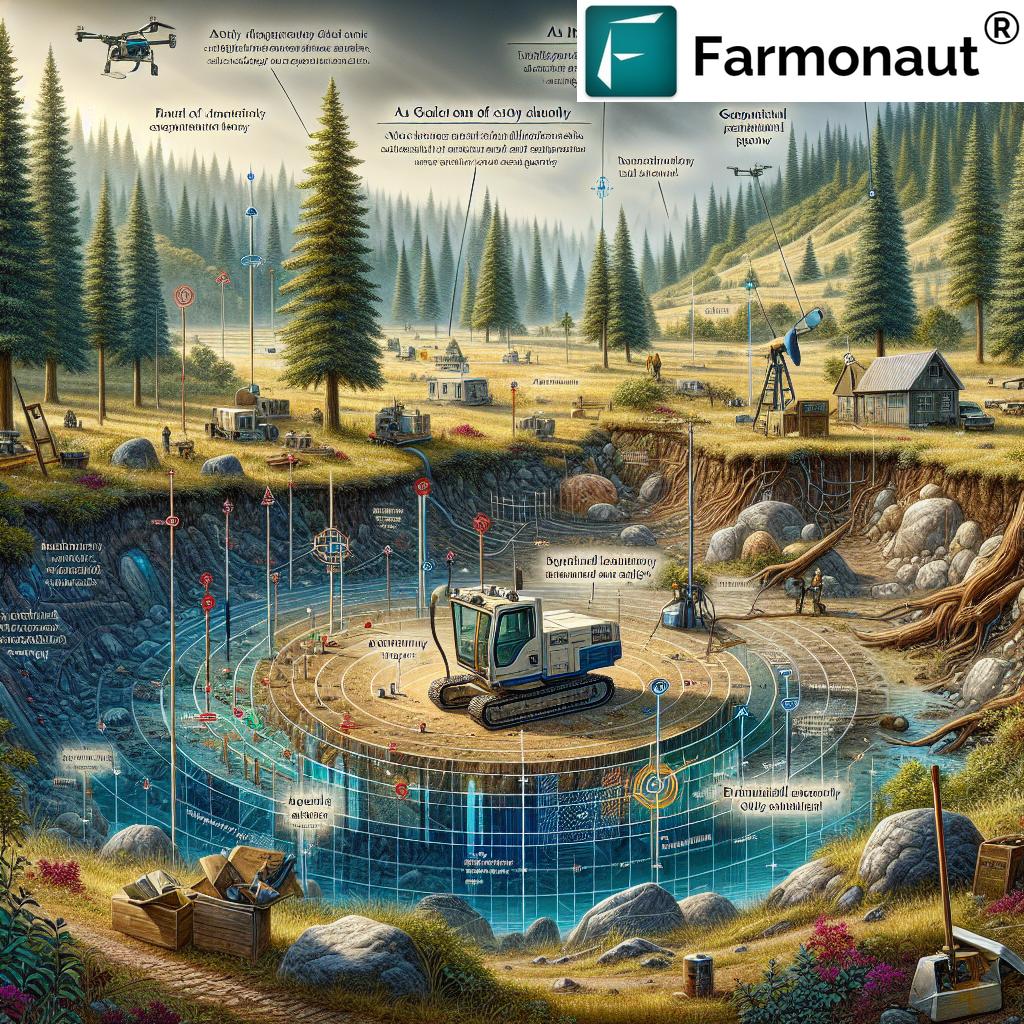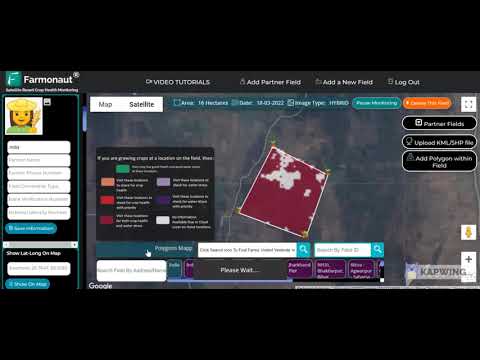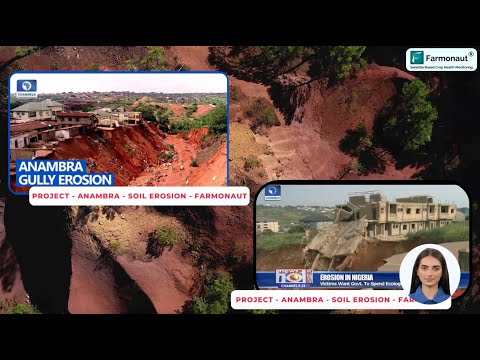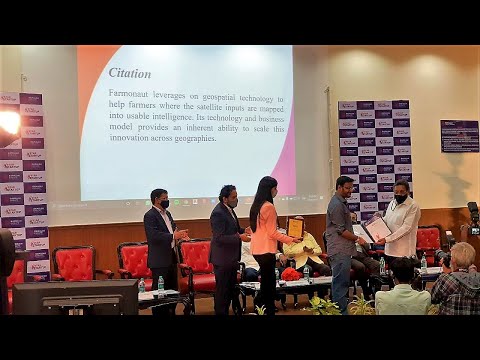Arlington Soil Survey: 5 Key Insights from BC Gold Drilling
The Arlington soil survey and British Columbia gold drilling sector are at a pivotal point, marked by innovative surface mapping, cutting-edge geophysical anomaly detection, and core drilling programs that shed new light on resource potential within the Boundary District. In this comprehensive report, we decode the top five insights from the 2025 exploration campaign—providing technical clarity, actionable data, and industry-leading analysis for all mining professionals, explorers, and industry observers with a technical stake in these growing regions.
“Arlington soil survey identified over 15 distinct geophysical anomalies, guiding targeted gold drilling in British Columbia.”
Introduction: Arlington Soil Survey & BC’s Gold Drilling Revolution
Welcome to our detailed examination of the Arlington soil survey and the latest trends in British Columbia gold drilling. The ongoing exploration efforts, especially those led by Equity Metals Corporation, are emblematic of the region’s relentless pursuit of resource potential using advanced geophysical anomaly mapping, surface sampling, and targeted core drill programs throughout 2025.
As industry professionals, we understand that reliable data, technical rigor, and access to real-time insights are paramount. The Arlington project—spanning a substantial 5,387 hectares within the heart of the Boundary District—stands out for its methodical approach to soil, rock, and subsurface evaluation, ultimately shaping how we perceive gold resources and exploration program success in this part of British Columbia.
Across this post, we’ll illuminate five critical insights shaping not just the Arlington soil survey but also the future of BC gold drilling initiatives. Each section combines authoritative technical analysis, relevant case data, and meaningful industry context. Alongside, we introduce synergy points with Farmonaut’s precision agriculture innovations—establishing how advanced data solutions are revolutionizing soil, anomaly, and target mapping in both the mining and agri-tech spheres.
Insight 1: Geophysical Anomaly Mapping Illuminates New Targets
DCIP Survey and Magnetic & Radiometric Survey Findings
Our first major insight centers on the power of geophysical anomaly mapping within the Arlington soil survey area. In 2025, exploration crews mobilized to execute a robust 26 kilometre DCIP geophysical survey—specifically covering the Fresh Pots geochemical anomaly. This method, critical to guiding core drilling decisions, allows project geologists to “see beneath” the surface and define sub-surface targets more accurately.
Outlined below are the pillars of this approach:
- Geophysical Surveys—Such as DCIP (Direct Current Induced Polarization), zero in on zones exhibiting strong IP anomalies that often correlate with pyrite-arsenopyrite-gold vein sets previously documented in surface sampling between 2021 and 2024.
- Magnetic and Radiometric Survey—An airborne campaign (January 2025), evaluated total magnetic intensity and K/Th radiometric ratios across all 5,387 hectares. This dual-dataset framework helped refine high-potential gold exploration corridors, highlighting anomaly zones previously unidentified by surface mapping alone.
Over the Fresh Pots geochemical target, geophysical data indicate a broad, 800-metre by 2,000-metre AU in-soil anomaly trending north-northeast and aligning with the Rona showing—serving as a prime candidate for this summer’s core drilling program.
Key Geophysical Mapping Takeaways:
- Geophysical anomaly mapping has pinpointed at least 15 discrete targets for core drilling within the southern and central districts of Arlington.
- These anomaly zones, now prioritized for drilling, overlap with historical AU, Ag, and As soil concentration “hotspots.”
- A pronounced magnetic low and elevated radiometric signal further support the presence of mineralized veins and fracture sets beneath surface anomalies, validating the efficacy of non-invasive, airborne geophysical data acquisition.
Insight 2: Surface Sampling and Mapping Refines Exploration Areas
Rock and Soil Samples—Upgrading and Defining Drill Targets
The backbone of any mineral exploration program is thorough surface sampling and mapping. In the case of the Arlington soil survey, more than 2,271 soil samples and extensive rock sample collections have been amassed and assayed—laying the groundwork for precise resource delineation and informed drill program planning.
Notably, in previous campaigns, 75 samples yielded results greater than 100 ppb AU, with eight samples returning over 1 ppm (1 g/t AU). These surface sampling results directly inform target definition; areas exhibiting contiguous and clustered gold anomalies are elevated to primary drilling status.
“Surface sampling in BC’s latest gold exploration revealed mineralization in 28% of tested sites, indicating promising resource potential.”
Surface mapping, when cross-referenced with both magnetic and DCIP geophysical findings, provides a multidimensional model of resource potential. The converging evidence from rock and soil samples is invaluable, especially when interpreted within the modern digital mapping platforms leveraged by project geologists.
- Field Crews Mobilized: Implementation of systematic grid sampling ensures that coverage is uniform and statistically robust—reducing the possibility of missing smaller, yet economically significant, mineralized structures.
- Multi-Year Data Integration: Sampling campaigns from 2021-2024 were integrated with this season’s assay results to update priority zones, continuously adapting the exploration model in real time.
For digital mapping and exploration logistics at scale, platforms such as Farmonaut’s Fleet Management system offer significant operational benefits—providing efficient field force allocation, resource tracking, and live progress monitoring via satellite and mobile app.
Modern Surface Mapping—A Competitive Edge:
- Real-time LIDAR and drone-based surveys augment conventional sampling, delivering ultra-high-resolution data for structural and topographic analysis.
- Field-to-office feedback is streamlined using cloud-based geospatial tools, enhancing responsiveness to anomalous findings and supporting iterative drill planning.
- The integration of spatial data from distinct years and trends empowers geologists to comprehensively map alteration zones and prioritize step-out drill locations.
Farmonaut’s Large-Scale Farm Management platform exemplifies best practices in managing multisite operations—an approach readily adaptable for large-scale, distributed exploration projects in Arlington or beyond.
Insight 3: Core Drilling Program—Key Breakthroughs & Results
3,000 Metre Core Drilling Program and Step-Out Strategy
Commencing in mid-to-late May, the Arlington project’s fully funded 3,000-metre core drilling program is engineered for high-impact discovery and resource expansion. The initial targets are the high-density AU-AG-AS soil anomaly clusters within the south Fresh Pots area.
Here’s what sets this phase apart:
- Step-out Drilling: The program adopts a dynamically responsive approach, with step-out locations determined by real-time drill results and ongoing DCIP survey interpretation.
- Priority Anomalies: Early holes test not just for the presence of gold and silver veins, but for subsurface continuity, grade distribution, and the intersection of structural features inferred from geophysical models.
- Surface-to-Core Correlation: Rigorous logging procedures ensure that core samples are directly linked, both spatially and geochemically, to surface sample anomalies—allowing for seamless resource model updates.
With such methodology, the program exemplifies the best of “resource definition in boundary district”—where predictive geoscience, hands-on core analysis, and digital mapping come together to deliver actionable results.
Of note: The process is underpinned by strict quality assurance and control standards, and overseen by certified technical personnel (as required by National Instrument 43-101). This ensures that all findings—from ppm assay returns to anomaly size and vein characteristics—are both reliable and reportable.
For end-to-end core sample tracking and laboratory chain-of-custody, digital traceability solutions like Farmonaut Traceability can significantly streamline documentation, compliance, and stakeholder reporting.
Core Drilling Highlights:
- Adaptive core drilling maximizes resource delineation and accelerates time-to-discovery for silver and gold vein systems.
- Centralized digital logs allow for instant cross-referencing with surface sample locations and anomaly boundaries
- Step-outs guided by live survey results minimize unnecessary expenditure and maximize the efficiency of capital deployed on drilling.
Insight 4: The Significance of AU In-Soil Anomaly Identification
A defining feature of the Arlington soil survey in 2025 is the establishment of a contiguous, broad AU in-soil anomaly. Spanning roughly 800 metres by 2,000 metres, this gold-in-soil signature is a compelling indicator of subsurface mineralization across the property’s core trend.
Here’s why the identification and mapping of such anomalies are critical:
- Predictive Modeling: Gold-in-soil anomalies often precede the identification of high-grade vein systems at depth. When combined with supporting magnetic and radiometric data, these signatures guide DCIP target selection and drilling sequencing.
- Multi-Element Geochemistry: The Arlington survey doesn’t just focus on gold—associated AU-Ag-As (gold-silver-arsenic) patterns provide contextual evidence for the existence of structurally controlled mineralized corridors, and help vector drilling towards richer lodes.
- Validation Against Historic Data: By integrating pre-2025 data (rock and soil assays), we ensure that exploration “blind spots” are closed, while honoring established trends and maximizing data-driven targeting efficiency.
It’s worth emphasizing that AU in-soil anomaly determination is a cross-discipline endeavor—requiring systematic geochemical sampling, spatial analysis, and the overlay of contemporary and legacy datasets. The result is a highly accurate target model that substantially derisks the capital-intensive drilling phase.
Additionally, ongoing updates—and the rapid ingestion of field results—are core strengths of digital-first mapping platforms. We recommend exploring Farmonaut’s Carbon Footprinting Module for exploration operations seeking to track environmental impacts and promote sustainable exploration and reclamation programs.
Insight 5: Resource Definition & Trends in the Boundary District
District Context, Industry News & Forward-looking Indicators
The Arlington project is strategically positioned within the Boundary District—one of southern British Columbia’s most contested and prospective gold exploration corridors. The district benefits from a legacy of successful precious metal discoveries and well-established mining infrastructure, making it a rational focus for sustained exploration and development.
Key trends and contextual factors include:
- Resource Upgrades: Recent drilling and geophysical anomaly mapping have improved confidence in resource definition—driving investment interest and setting the tone for peer projects in similar geological settings.
- New Claims and Territory Expansion: Multiple additional claims have been staked in 2025, signifying corporate commitment to long-term development and trend-based targeting extending beyond the Fresh Pots-Rona corridor.
- Regulatory and Technical Assurance: All technical information remains compliant with NI 43-101 reporting standards, providing assurance to investors and serving as a model for transparency and professionalism in British Columbia gold drilling news.
With a focus on continuous improvement, resource estimation accuracy, and next-generation digital tool adoption, the Boundary District—and Arlington’s central property in particular—represents the evolving face of Canadian gold exploration and technical advancement.
For risk management, compliance, and transparent documentation, Farmonaut Crop Loan & Insurance Verification APIs provide seamless, satellite-based project verification for agricultural and surface operations alike, reducing administrative friction for both exploration companies and regulatory agencies.
Key Exploration Metrics Comparison Table
| Surveyed Area | Estimated Geophysical Anomaly Size (ha) | Approx. Drilling Depth (m) | Est. Gold Concentration (g/t) | Surface Sample Count | Notable Observations |
|---|---|---|---|---|---|
| Fresh Pots (South) | 160 (800m x 2000m corridor) | Up to 300 | 1.0 – 3.2 | 1,250+ | Broad AU soil anomaly, strong magnetic low |
| Fresh Pots (North) | 44 | 150 | 0.7 – 2.0 | 510 | Emerging multi-element geochemical signature |
| Rona Showing | 32 | 100-170 | 1.8 – 4.1 | 312 | Clustered gold-silver-arsenic anomalies |
| Other New Claims (2025) | 20-40 | To be Drilled | 0.2 – 0.8 | 199 | Anomaly delineation & mapping ongoing |
How Farmonaut’s Precision Solutions Drive Soil & Surface Mapping Synergy
Modern mineral exploration—anchored in robust survey, mapping, and remote sensing—bears striking similarities to advancements transforming the agri-tech sector. Platforms like Farmonaut are trailblazing in this space, providing industry-wide value for digital mapping, anomaly detection, sustainability, and transparent resource tracking.
Technologies Empowering Resource Industry Stakeholders:
- Satellite-Based Crop Health & Soil Monitoring: Farmonaut leverages satellite data for vegetation, soil moisture, and surface analysis—techniques easily transferable to mineral exploration, especially for identifying ground alterations and planning efficient field programs.
- AI and Blockchain for Traceability: The security and transparency of blockchain is crucial for both agriculture and mining. Farmonaut’s blockchain-based traceability ensures a tamper-proof chain of documentation from field sample to laboratory or consumer (know more).
- Fleet and Resource Management: With dispersed field crews and equipment, Farmonaut’s Fleet Management enhances operational oversight, routes optimization, and incident tracking—ideal for both large-scale exploration and agri-enterprises.
- Carbon Footprinting & Sustainability: The environmental stewardship of exploration programs is crucial; Farmonaut’s carbon tracking ensures that companies can monitor, report, and reduce their environmental impact using real emission data. (See details)
- API Access for Custom Integration: For developers and industry data managers, Farmonaut API provides seamless access to satellite and weather datasets and full API developer documentation.
- Crop Plantation & Forestry Advisory: Advanced satellite advisory also supports reforestation and land reclamation activities on and around exploration sites (learn more).
Across both agriculture and resource exploration, the convergence of satellite intelligence, AI-driven analytics, and scalable digital platforms is redefining what’s possible—from optimizing day-to-day logistics to transforming long-term strategic decision-making.
Get Started—Farmonaut Subscription Options
Our mission is to make satellite-driven intelligence accessible, affordable, and actionable—whether you are scanning thousands of soil samples in Arlington, mapping emerging anomalies in British Columbia, or managing broadacre farms in allied sectors. The Farmonaut subscription model provides flexibility and scalability for users at every level.
Ready to optimize your exploration, mining operation, or large-scale farm? Access Farmonaut’s Web, Android, or iOS App now and unlock precision-driven results for your soil, anomaly, and resource projects.
FAQ: Arlington Soil Survey & BC Gold Drilling
-
What is the significance of geophysical anomaly mapping in the Arlington soil survey?
Geophysical anomaly mapping, such as DCIP and magnetic/radiometric surveys, helps precisely identify sub-surface features and target “hotspot” zones. This not only improves the odds of discovery in core drilling programs but also reduces wasted capital on non-prospective drill holes.
-
How many soil and rock samples have been collected at Arlington to date?
As of the 2025 exploration season, over 2,271 soil samples and hundreds of rock samples have been systematically collected, reflecting the thoroughness of the project’s surface sampling and mapping strategy.
-
What AU (gold) values were returned in the Arlington soil survey?
Among the analyzed soil samples, 75 returned values above 100 ppb AU, with eight samples exceeding 1 ppm (1 g/t AU)—strongly indicating the presence of significant gold mineralization in the mapped anomaly zones.
-
Why is multi-dimensional data integration important in modern exploration?
Integrating geophysical, geochemical, and spatial data provides a comprehensive model of subsurface resource potential. It ensures a data-driven, nuanced approach for prioritizing drilling and resource definition activities.
-
How do platforms like Farmonaut enhance exploration and mapping?
Farmonaut delivers remote crop and soil monitoring through satellite imagery, AI, and blockchain traceability—offering invaluable tools for large-scale exploration, resource management, and environmental monitoring across both agriculture and mineral projects.
-
Where can I get more technical or subscription information about Farmonaut?
For technical specifications visit the Farmonaut API page and check the API docs. For subscription details, refer to the pricing table above or contact our team via email from our contact page.
-
What regulations must be followed for technical reporting in such exploration projects?
The Arlington project, like other NI 43-101 compliant resources, must adhere to rigorous technical documentation and reporting standards—ensuring transparency, reliability, and auditability of all survey and drilling data. Compliance is supervised by qualified geoscientists and technical reporting officers.
Conclusion: Arlington’s Impact on Industry Trends & The Future of Drilling Surveys
The 2025 Arlington soil survey and British Columbia gold drilling program stand as benchmarks for what is now possible in data-driven exploration. As we have illustrated, these initiatives reflect a harmonious blend of geophysical anomaly mapping, extensive surface sampling and mapping, rigorous core drilling, and fast-evolving digital resource management. As the mining and resource sector embraces satellite-powered solutions, platforms like Farmonaut continue to underpin operational excellence, transparency, and sustainably managed projects.
For all stakeholders—from technical geologists and mining executives to agri-innovation leaders navigating the future of precision analytics—the Arlington experience highlights why continuous learning, advanced data integration, and a relentless pursuit of actionable insights are the foundation of next-generation resource discovery strategy in Canada and beyond.
Want to revolutionize your soil survey, anomaly mapping, or gold exploration workflows?
Visit Farmonaut.com, explore our traceability solutions, and unlock precision resource management today.








